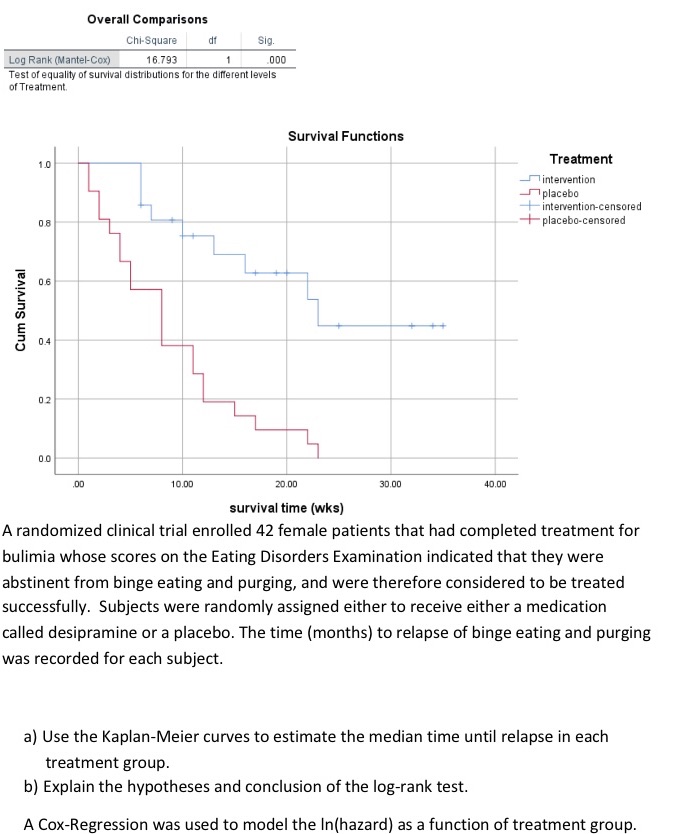A randomized clinical trial enrolled 42 female patients that had completed treatment for bulimia whose scores on the Eating Disorders Examination indicated that they were
A randomized clinical trial enrolled 42 female patients that had completed treatment for bulimia whose scores on the Eating Disorders Examination indicated that they were abstinent from binge eating and purging, and were therefore considered to be treated successfully. Subjects were randomly assigned either to receive either a medication called desipramine or a placebo. The time (months) to relapse of binge eating and purging was recorded for each subject. a) Use the Kaplan-Meier curves to estimate the median time until relapse in each treatment group.b) Explain the hypotheses and conclusion of the log-rank test.A Cox-Regression was used to model the ln(hazard) as a function of treatment group. Here is part of the outputVariables in the Equation B SE Wald df Sig. Exp(B)Treatment 1.509 .410 13.578 1 .000 4.523c) Which treatment group is used as the "reference group"?d) Find and interpret the hazard ratio.e) If the data were coded using the opposite treatment group as the reference group, what would be the hazard ratio? f) If you fit another Cox Regression model including both treatment group and age as covariates, would you expect the hazard ratio for treatment to change substantially? Explain your reasoning.

Step by Step Solution
There are 3 Steps involved in it
Step: 1

See step-by-step solutions with expert insights and AI powered tools for academic success
Step: 2

Step: 3

Ace Your Homework with AI
Get the answers you need in no time with our AI-driven, step-by-step assistance
Get Started


